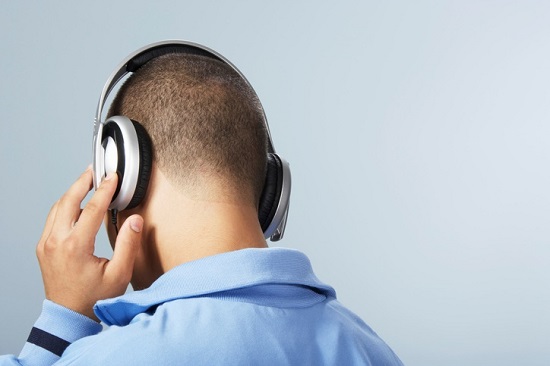
If you suspect hearing loss only happens to older people, you might be surprised to discover that today 1 out of every 5 teens has some measure of hearing loss in the United States. Furthermore, the rate of hearing loss in teens is 30 percent higher than it was in the 1980s and 90s.
It should come as no great surprise then that this has caught the attention of the World Health Organization, who in answer produced a report notifying us that 1.1 billion teens and young adults worldwide are at risk for hearing loss from dangerous listening habits.
Those unsafe habits include attending loud sporting events and concerts without earplugs, along with the unsafe use of headphones.
But it’s the use of earphones that could very well be the greatest threat.
Bear in mind how often we all listen to music since it became mobile. We listen in the car, on the job, at the gym, and at home. We listen while out for a walk and even while going to sleep. We can combine music into almost every aspect of our lives.
That level of exposure—if you’re not cautious—can slowly and silently steal your hearing at a very early age, resulting in hearing aids later in life.
And given that no one’s prepared to eliminate music, we have to determine other ways to safeguard our hearing. Luckily, there are simple precautions we can all take.
The following are three important safety tips you can make use of to protect your hearing without compromising your music.
1. Limit the Volume
Any sound louder than 85 decibels can lead to permanent hearing loss, but you don’t need to invest in a sound meter to measure the decibel output of your music.
Instead, an effective general guideline is to keep your music player volume at no higher than 60 percent of the maximum volume. Any higher and you’ll likely be above the 85-decibel ceiling.
In fact, at their loudest, MP3 music players can pump out more than 105 decibels. And given that the decibel scale, like the Richter scale, is logarithmic, 105 decibels is approximately 100 times as intense as 85.
Another tip: normal conversation registers at about 60 decibels. So, if while listening to music you have to raise your voice when conversing to someone, that’s a good indication that you should turn down the volume.
2. Limit the Time
Hearing damage is not only a function of volume; it’s also a function of time. The longer you expose your ears to loud sounds, the more extensive the injury can be.
Which brings us to the next rule of thumb: the 60/60 rule. We already recommended that you keep your MP3 player volume at 60 percent of its maximum volume. The other component is making sure that you limit the listening time to under 60 minutes a day at this volume. And bear in mind that lower volumes can handle longer listening times.
Taking regular rest breaks from the sound is also important, as 60 decibels without interruption for two hours can be significantly more damaging than four half-hour intervals dispersed throughout the day.
3. Select the Appropriate Headphones
The reason many of us have difficulty keeping our music player volume at less than 60 percent of its max is due to background noise. As surrounding noise increases, like in a congested gym, we have to compensate by boosting the music volume.
The remedy to this is the use of noise-cancelling headphones. If background noise is mitigated, sound volume can be reduced, and high-fidelity music can be appreciated at lower volumes.
Low-quality earbuds, alternatively, have the double disadvantage of being closer to your eardrum and being incapable of decreasing background noise. The quality of sound is diminished as well, and coupled with the distracting external sound, increasing the volume is the only method to compensate.
The bottom line: it’s well worth the money to invest in a pair of quality headphones, preferably ones that have noise-cancelling functionality. That way, you can adhere to the 60/60 rule without compromising the quality of your music and, more importantly, your hearing later in life.
